Our Wine Grape Growers are Invading Connecticut
Hello Winemakers,
We hope 2019 is treating you well. We are excited to announce that several of our Wine Grape Growers will be in Connecticut for our Annual Winemaker Dinner on Saturday February 23rd. The dinner is open to anyone who would like to attend. Our wine grape growers from Suisun Valley, Lodi, Central Valley, Paso Robles, and Washington State will all be in attendance. We will be handing out medals and awards to those who entered our wine competition followed by a special guest speaker. There will be raffle prizes, a delicious dinner, wine tasting, an open bar, and dancing. It’s always a lot of fun.
Regardless of if you entered your wines in our competition, you can still purchase a ticket, hand out with your fellow home winemakers, and maybe even win some free grapes and equipment. The winemaker dinner a celebration of home winemakers and the delicious wines you make. Feel free to bring a few bottles of your favorite wines to share with other attendees, our growers, and hopefully some of the Musto Wine Grape Crew. Everyone will be excited to try it!
You can purchase your ticket by clicking HERE –> http://www.juicegrape.com/Competition-Dinner-RSVP/
Event Details:
Zandri’s Stillwood inn:
1074 S. Colony Rd, Wallingford, CT 06492
February 23rd, 2019
6:30PM – Midnight
Admission is $80.00/person and your payment serves as an RSVP. You can RSVP by purchasing tickets on our website, http://www.juicegrape.com/Competition-Dinner-RSVP/, or you can call/email Christina at 860-278-7703 or cmusto@juicegrape.com. You must purchase a ticket for this event.
We are accepting requests to reserve tables. If you would like to reserve a table please include a list of names of the people in your party. Each table holds 8-10 people. If you purchase a grouping of tickets, please email Christina the names of the people you purchased the tickets for.
We will be donating all of the proceeds from the event to Dana Farber Cancer Association to help cure brain cancer. Please bring cash to purchase your raffle tickets. There is not ATM on site and we do not take credit cards for raffle tickets.
Where to Stay:
Hotels in Wallingford, CT
Homewood Suites by Hilton Wallingford-Meriden
- 90 Miles Dr., Wallingford, CT
- Website
- 7 minute drive from venue
Hilton Garden Inn Wallingford/Meriden
- 1181 Barnes Road, Wallingford, CT
- Website
- 8 minute drive from venue
Courtyard by Marriott New Haven Wallingford
- 600 Northrop Road, Wallingford, CT
- Website
- 7 minute drive from venue
*Please note we suggest either having a designated driver or ubering to the event.
Please RSVP/purchase your ticket by February 18th –> http://www.juicegrape.com/Competition-Dinner-RSVP/
Space is limited, so don’t delay! We look forward to seeing you at the Winemaker Dinner!
Sincerely,
The Musto Crush Crew
Lodi in the 2018 national news
“Forward-thinking winemakers are embracing experimentation by working with Lodi grapes that will surprise you.” – We have had the privilege and opportunity of working with our Lodi Wine Growers for over 75 years. It is great to see them getting the recognition they deserve! Lodi is MUCH more than Zinfandel. It boasts interesting grape varieties, state of the art growing practices, and winemakers who aren’t afraid to go all out.
🍷🍇 Check out the full article by clicking HERE.
Free Winemaking Faults & Flaws Class
Have you ever had a funky smelling wine? Not sure what caused that smell? Come to Musto Wine Grape’s Faults & Flaws class and learn how to counteract and avoid those funky smells in your wines.
This class is FREE to attend and will be held at our store in Hartford, CT on Saturday January 5th at 10:00AM. Hope to see you there!
If you cannot make the class we will be streaming it LIVE on Facebook, so check into our Facebook page on Saturday January 5th at 10:00AM 🍷
Please EMAIL cmusto@juicegrape.com to RESERVE your seat!
Build Your Own Olive Flavors
Do you love Olives as much as Stevie? If you do then we have the olives for you! Musto Wine Grape has a new product, 2.5lbs of green olives ready to be infused and consumed!
Add your favorite spices to the olives. Oregano, crushed pepper, thyme, rosemary, basil, chilli, garlic, or mustard seed for example. Or add 1 large sliced carrot, 1/2 large onion, and 1/2 large red bell pepper, cutting the onion in 3/8 inch dice and the pepper in thin julienne cuts to create a marinade. Mix the marinade with 2 oz of virgin olive oil and 1 oz of red wine vinegar.
A great winter project or gift for your favorite foodie.
Call Musto Wine Grape to reserve your Build Your Own Olive Flavors Kit. – 877.812.1137
The “Winemaker’s Hot Toddy” – Mulled Wine
We don’t know about you but as the weather gets colder all we want to do is curl up by the fire with a good glass of homemade wine. This week however, we were thinking about mixing it up. Mulled Wine seemed to be the best option for today. It’s cold, dreary, and we need a pick me up this afternoon. So we are cooking up some tasty Mulled Wine!
What is Mulled Wine? Well its a delicious concoction made up of wine, apple cider, and a few other drops of other tasty ingredients. Think of it as the Winemaker’s version of a Hot Toddy. It’s satisfying, warm, and is wine infused. The perfect warm drink on a cold Sunday afternoon.
Musto’s Mulled Wine Recipe
4 cups apple cider (or can use apple juice if you want it a little sweeter)
1 bottle of red wine (suggest cabernet, merlot, or a blend of both)
1 tablespoon – 1/4 cup of honey (depends on your sweet tooth)
2 cinnamon sticks
1 orange – juiced and zested
4 whole cloves
2-3 stars of anise (do to taste)
orange peels/wedges for garnish
Add the apple cider/juice, wine, cinnamon sticks, orange zest, orange juice, and cloves to a saucepan. Bring to a boil. Add stars of anise and honey to taste. Let it simmer for 8-10 minutes. Pour into mugs, add an orange peel/wedge for garnish, and enjoy!
2018 Wine Competition Results
Good Morning Winemakers,
The results are officially here! Click the links below to access the 2018 MWG Wine Competition Results
2018 Amateur Wine Competition Winners
2018 Commercial Wine Competition Winners
Our Wine Competition Dinner will be held Saturday February 23rd, 2019 at Zandri’s Stillwood Inn. Click here to purchase your tickets. Best in show will be announced at the dinner!
Congratulations to all of the winners! Our Growers from California and Washington state will be in attendance to celebrate your wines. You don’t want to miss this event. We look forward to celebrating you and your wines in February!
Wine Competition Dinner Details:
- THE RESULTS & JUDGING NOTES WILL BE RELEASED at the dinner
- ALONG WITH A MEDAL CEREMONY, Dinner, DANCING, FUN GAMES, & RAFFLES!!
- Zandri’s stillwood inn:
1074 S. Colony Rd, Wallingford, CT 06492
February 23rd, 2019
6:30PM – Midnight
Please email cmusto@juicegrape.com with any questions regarding the wine competition or competition dinner.
Pairing your Homemade Wines for Thanksgiving
Pairing your homemade wines with your Thanksgiving meal can be tricky. Check out some of our wine and food pairing suggestions to help you show off your delicious wine!
Turkey:
Light Reds, Medium Reds, and Rich White Wines pair well with Chicken and other White Meats like Thanksgiving Turkey. Your Pinot Noir, Gamay, Grenache, Chardonnay, or GSM Blend would be a great compliment to the meal.
Beef:
Beef, Cured Meats, and Smoked Meats pair best with Medium or Full Bodied Reds. Try your Zinfandel, Cabernet Sauvignon, Castel del Papa, or Italian Blend.
Fish:
Yes, red wine CAN be paired with fish! Try a Light Red or a Light Dry White such as your Gamay or Pinot Grigio.
Carbs:
Most Carbohydrates can pair with most wines. It really depends on the sauce. Try your Cabernet-Merlot Blend or Il Toscano to balance and enhance the flavors of a tomato sauce.
Vegetables:
A Light White or Med-Light Red will compliment most vegetables – whether they are roasted or dressed. Try your Viognier or Grenache.
We want to wish you and your family a very Happy Thanksgiving. We hope it is a wonderful day filled with family, friends, and great homemade wine!
Cheers Winemakers!
Making Italian Amarone from Juice: How to Drink like a Millionaire, but Make Wine on a Budget
A Little About Amarone:
The Italian Amarone wine is famous for its strong, tannic character and full bodied flavors of dried fruit. Rich and complex, it is a benchmark Italian wine, often challenging to recreate until now. Amarone develops its rich and complex character from partially drying the grapes, then fermenting them, decreasing the fruit to skin ratio. The higher levels of skin contact will give the intense tannins and dried fruit character that the style is known for.
How to Make Amarone/Amorosso from Fresh Juice:
When making Amarone with fresh juice, there are certain ingredients that you may add as the winemaker to help replicate the classic style and methods. To increase the skin contact for the juice, you can purchase an All-Grape add pack to add into your bucket of juice. The All-Grape pack is simply just that, wine grape skins and juice, designed to add more tannins and complex flavors to juice. The tannins found in the grape skins will become soluble in the juice and add more of the traditional Amarone character to it.
Juice Options:
Winemaking Kit Options:
A way to increase the tannin content at fermentation and mimic the classic style is by adding supplemental tannins. Yeast naturally consume some tannins throughout their metabolic process of fermentation. Without adding additional tannins, they will consume some of the grape tannins that give Amarone its unique style. By adding some very cost effective fermentation tannins such as oak dust or FT Rouge, additional tannins will be available to the yeast for their process, therefore preserving the grape tannins for the consumer. FT Rouge is a natural oak derived tannin that will not only provide stronger tannic character, but will also help to enhance and secure color. Apply FT Rouge at 1gram/gallon. Oak dust will also supply some “sacrificial tannins” to the yeast fermentation process. The yeast will consume these tannins, leaving the more favorable, smother grape tannins for the consumer.
Winemaking Add Ons:
- FT Rouge
- All Grape Pack
- Oak Dust
Another way to enhance your process of making Amarone from juice will be in your yeast and bacterial selection. Some yeasts that will enhance the rich fruit character of the Amarone juice are BM 4×4 and RP15. Both yeasts have a higher temperature tolerance and will help to secure the rich color. To recreate a traditional Amarone closely, the perception of acidity will need to be reduced. Using malo-lactic bacteria to metabolize the harsher malic acid, and turn it into lactic acid, which has a smoother, creamier mouthfeel, is a vital step in creating a traditionally styled Amarone. This bacterial fermentation can take place at the same time as the primary yeast fermentation, so that the bacteria will benefit from the available nutrients and heat generated via the yeast fermentation. For an individual bucket, we sell a pouch of bacteria that are very easy to use. Simply wipe the pack with sanitizer and stir it into the wine. The bacteria will finish up their fermentation shortly after the yeast finish their fermentation; approximately 2-3 weeks after it is inoculated.
Yeast Suggestions:
To round out the full bodied flavor and profile of Amarone, the winemaker will have to add oak to create a balanced bouquet. After fermentation, the winemaker should consider the addition of oak via a traditional barrel or a supplement, such as oak chips or staves. These will add additional tannic character, creating the Amarone most closely to its traditional style.
Aging Additions:
by the Winemakers at Musto Wine Grape
If you are interested in sourcing Italian Juices for winemaking please contact us at sales@juicegrape.com or 877-812-1137.
Trebbiano: Blended Uses for Italy’s Blending Grape
Trebbiano is a thinner skinned white grape from the very center of Italy, Umbria. Trebbiano accounts of roughly 1/3 of white wine grapes planted in Italy. Known for its fruity punch and bright acidity, Italian winemakers have been using this grape as a key component in white wine blends for hundreds of years. Trebbiano is also used in Italy to make premium quality balsamic vinegar. The Italians are not the only culture to have a unique use and high value for the Trebbiano grape. France uses Trebbiano (known there as Ugni Blanc) for the production of Cognac and also as a blending grape for wine production.
Trebbiano is an excellent blender for white wine production as it has a soft aroma that can easily compliment other white grape varietals. Subtle hints of citrus and minerality can easily meld with other more dominant white wine grape aromas upon blending. The flavors found in the aroma will carry through to the palate; lemon, wet stone, grass, and apple. For the winemaker, using yeasts such as Alchemy I or K1-V1116 will help to produce a stronger aroma and fruit flavors. Both yeasts should be used in a temperature controlled environment, as to not generate too much heat during fermentation, burning off important aromatic esters. This grape would complement more bold white grape varieties such as Sauvignon Blanc, Muscat, or Gewurztraminer. It would be wise to ferment each wine in the blend separately and then blend post fermentation. Trebbiano can help increase quantities and balance out a stronger flavored or more acidic white wine. The use of fermentation aids such as Opti-White and Booster Blanc will also help to promote and retain the important varietal aromas. We always advise to use a complete nutrition program throughout fermentation, including the use of Go-Ferm, Fermaid O, and Fermaid K. This will help avoid any stuck fermentations and off aromas.
If you are looking to make a classic, refreshing stand-alone Italian white wine or blend, Trebbiano could be one of your best options. It’s mild fruity flavor and aromas are enjoyable on their own or within a blend. Musto Wine Grape is proud to source fresh Trebbiano juice directly from Italy. Try some this season for a refreshing taste of Italy.
Musto Wine Grape brings in Italian juices from Italy every October. If you’re interested in making wine from Italian Juice please email sales@juicegrape.com for more details.
by the Winemakers at Musto Wine Grape
FlexTanks: Classic Results with Convenient, Modern Technology
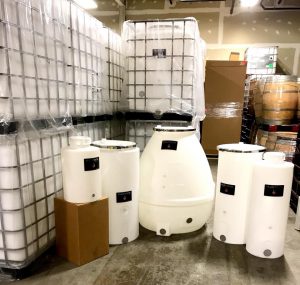
For many years, winemakers have sought a way to store their wines that not only adds to the overall quality of their wine but won’t deplete their wallets or the environment. Flex Tanks are an excellent solution to all of these problems. Flex Tanks are an increasingly popular line of wine storage vessels that are incredibly space efficient, cost-effective, and also promote micro-oxidation on a level similar to a wooden barrel.
FlexTanks are made of a rotational molded, food grade safe plastic. The polyethylene is oxygen permeable allowing for a small amount of oxygen transfer, on the same levels as a second year wooden barrel. This will allow wine to age and “breathe” as though it were in a barrel, creating a thicker, creamier mouthfeel. There are two different grades of FlexTank depending upon the winemakers goals; either the maturation weight, which allows a level of oxygen transfer on par with a second year barrel, and a heavyweight level which allows less oxygen transfer, approximately 50% less than the maturation weight.
FlexTanks are available in a wide variety of shapes and sizes, accommodating the space and scale of any winemaker. From small 15 gallon cylindrical tanks, to tall, narrow space saving 570 gallon tanks, there is a FlexTank for any situation. There are a number of smaller sizes, well suited for the home winemaker, including 15, 30, 50, 70, 80 gallon sizes. All tanks are formed in a way to minimize headspace and easy filling. All tanks are equipped with a lower spigot or 1.5” butterfly valve, which is easy for transfers. Most of the larger sizes are also equipped with a sampling port and breathable airlock. In the authors’ personal experience, a 300 gallon FlexTank can be cleaned thoroughly of tough debris within 15 minutes. The plastic is incredibly easy to clean and is compatible with winery alkaline cleaners such as B-Brite or Soda Ash. Most debris is easily rinsed off with a hose and the contoured base promotes easy drainage.
FlexTank also makes many tanks that are ideal for the commercial winemaker as well. They offer uniquely shaped 570 gallon “cell” model tank that has a very small footprint of 82”x29”. This tank is ideal for space saving for wineries concerned with space issues. They also make excellent 240 or 300 gallon “stacker” tanks that are cube shaped and able to be stacked up to three high, also reducing the floor footprint if space is a concern. FlexTanks are not only for aging, but can be used for fermenting as well. FlexTank offers an airlock to allow CO2 to escape throughout the fermentation. They have designed the “Apollo” and “Orion” in an egg shape, to simulate the classic vessels of Europe, often made of wood or concrete. The oval contours will help to promote yeast circulation throughout fermentation.
Along with a much smaller physical footprint, FlexTanks also leave a much smaller environmental footprint. While an oak barrel may last for a few vintages, before it is devoid of oak flavor, a FlexTank can be used indefinitely with more cost effective wooden chips to promote oak flavor and micro-oxidation. The polyethylene that the tanks are made of is fully recyclable along with any metal components (valves, framing, and ratchet lid). Also, due to the ease of cleaning, much less water is used in their cleaning process than the traditional barrel or metal tank. Overall, FlexTanks can be a large step towards more environmentally friendly winemaking practices.
Musto Wine Grape is proud to offer the full line of FlexTank products. Our staff has almost ten years of very positive experiences working with the tanks and is happy to make suggestions to best fit your winemaking needs.
by the Winemakers at Musto Wine Grape








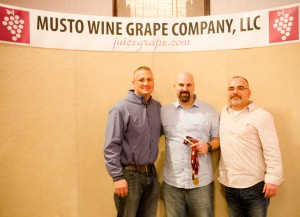
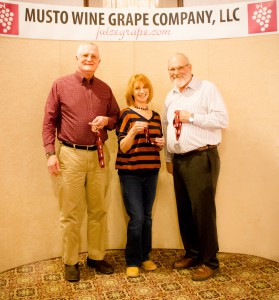

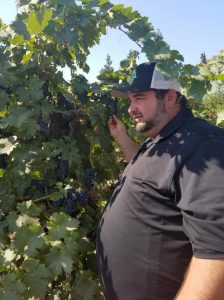
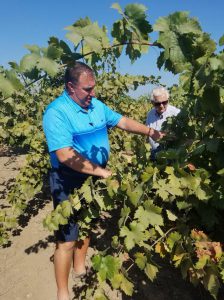
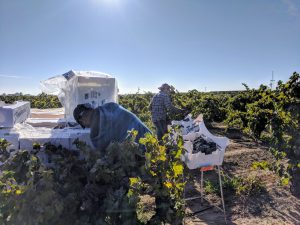

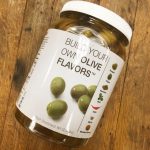
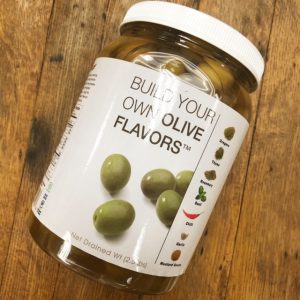





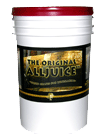




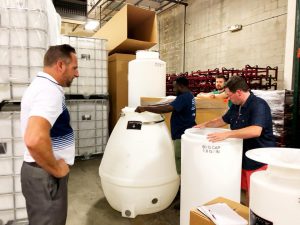

Recent Comments